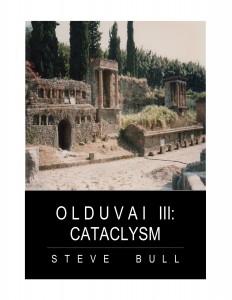Home » Posts tagged 'the honest sorcerer' (Page 2)
Tag Archives: the honest sorcerer
We Are Not Mining with Renewable Energy
We Are Not Mining with Renewable Energy …and when we do, shit is going to get real The way we like to think of “renewables”. No smoke, just green fields and a clear blue sky… Photo by Serge Le Strat on Unsplash There are no “renewables” without mining, an unsustainable practice turbocharged by burning fossil fuels. Yet, advocates […]
The End of the Colombian Age
The End of the Colombian Age Dusk over Oceania. Photo by Johannes Plenio on Unsplash We are witnessing the end of an era in history spanning half a millennium; the end of Western dominance in geopolitics. For those who understand the role of resources and energy in economics, culture and politics, it comes as no surprise that […]
Capitalism Cannot Turn Into Anything But Autocracy
Capitalism Cannot Turn Into Anything But Autocracy …only to disintegrate altogether soon after Photo by SpaceX on Unsplash The history of capitalism has an arc of its own. It has a beginning, a high point, and yes, an end — with or without revolutions, climate change or ecological destruction. Capitalism follows a trajectory of natural evolution culminating in a […]
The Great Simplification Ahead
The Great Simplification Ahead “Until debt tear us apart” Photo by Alice Pasqual on Unsplash There is no denying that a major economic downturn is now in the books, and that lacking an energy miracle, the world economy is about to go through a major shift. After discussing the faulty nature of prevailing economic metrics (GDP) in last […]
Financing the End of Modernity
Financing the End of Modernity How financialization heralds the end of the industrial age That didn’t worked out as intended… Who would’ve thought? Photo by micheile henderson on Unsplash Western neoliberal economies are on the brink of a steep economic decline. Barring an energy / productivity miracle a prolonged and deep recession is clearly on the horizon. While […]
White (Hydrogen) Lies
White (Hydrogen) Lies Photo by Carlos Torres on Unsplash Geologists, while searching for oil and gas in France, have found the biggest deposit of pure naturally occurring hydrogen yet. A source of fuel which “burns clean” and hot, and thus can “replace” fossil fuels in “hard to decarbonize” areas of the industry like steel, glass or cement manufacturing, not […]
This Energy Crisis Is Here To Stay
This Energy Crisis Is Here To Stay …and can potentially become highly explosive Photo by Luke Jernejcic on Unsplash When it comes to energy these years, bad news seem to be popping up like mushrooms on a shiitake-farm. A recent flurry of articles on “The No. 1 Source for Oil & Energy News”, Oilprice.com, is a case in […]
Collapse Is An Outcome, Not A Problem To Be Solved
Collapse Is An Outcome, Not A Problem To Be Solved Technology as dinosaur. Photo by Jen Theodore on Unsplash There is a rule in ecology called the maximum power principle formulated by Lokta in 1925. It can be summarized as follows: “The systems that survive in competition are those that develop more power inflow and use it best […]
Stop Using the Word ‘Sustainability’ for God’s Sake
Stop Using the Word ‘Sustainability’ for God’s Sake No. This is not sustainable. Photo by Appolinary Kalashnikova on Unsplash For millions of years us, humans, were part of Nature. We were born in the wild, lived in the wild, died in the wild. We ate what we found, drank the waters of rivers and streams, breathed air purified […]
Climate Change Has Come Full Circle
Climate Change Has Come Full Circle Photo by Mike Newbry on Unsplash Our modern technological civilization was born out of fossil fuels. Coal. Oil. Natural gas. To this very day most of our industry, transportation and agriculture is still powered by these incredibly dense, portable, storable sources of energy. There is a fly in the ointment though: the […]
Renewables: Plug & Pray?
Renewables: Plug & Pray? Photo by American Public Power Association on Unsplash We are made to believe by PR articles and mainstream media pundits that “renewables” are just plug and play. Like computer screens. That all we need to do is to shut down old fossil fuel power plants and replace them with wind and solar. We are […]
A Mirage of Abundance
A Mirage of Abundance Mirage. Image source “Truth is like poetry. And most people fucking hate poetry.” Adam McKay, The Big Short — We will never run out of minerals, or petroleum for that matter. There is an ample amount of these resources in Earth’s crust, actually more than we could ever extract. — Phew! Are […]
A Deep Dive Into the Future
A Deep Dive Into the Future Photo by Denny Müller on Unsplash Thinking more than a couple of days ahead is not one of humankind’s greatest strengths, especially not beyond the scale and scope of our immediate surroundings. In the rare occasion when thinking of this type does happen, however, it usually takes two directions: the future will […]
The Spectre of Peak Oil — Part 2
The Spectre of Peak Oil — Part 2 Ramifications: the long term consequences of peak oil Photo by Boston Public Library on Unsplash Peak oil is not the end of the world. It is a subtle, almost barely noticeable phenomenon. It does not mean that we will run out of oil from one day to another, causing all […]
Say M for Magic!
Say M for Magic! Simon Sinek, Underpants Gnomes and the Energy Transition Photo by israel palacio on Unsplash One of the goals of this blog — beyond making an attempt at giving a technical explanation on how this iteration of a technological civilization works, and why it is inherently unsustainable — is to explore the thought patterns we […]



